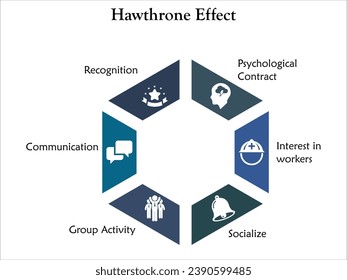The Hawthorne Effect refers to the phenomenon where an individual’s work performance is influenced not just by objective working conditions, but also by how the work environment—including tasks, colleagues, and supervisors—is perceived.
The concept originated from empirical research conducted at the Hawthorne Works of the Western Electric Company between 1924 and 1932. These studies became foundational to the Human Relations Movement, highlighting the critical role of social factors in the workplace.
Initially, the studies aimed to determine how physical work conditions—such as break schedules, lighting, ventilation, and color schemes—impacted productivity. However, no clear correlation emerged. Researchers Elton Mayo, Fritz Roethlisberger, and William J. Dickson shifted their focus to psychological influences on worker performance. To control for these, they fostered mutual trust between researchers and participants, began involving workers in discussions about experimental changes, and adopted a cooperative leadership style to reduce mistrust.
Remarkably, even as working conditions and policies varied, the output of the experimental group increased by about 30%—a result that puzzled researchers and indicated deeper social influences at play. The pivotal findings came from the final phase, the Bank Wiring Observation Room Experiment, which explored the impact of informal work group dynamics on individual behavior. Key findings included:
-
Management norms: Informal groups set internal standards to regulate daily output, limiting both overperformance and underperformance.
-
Data manipulation: Employees concealed extreme results to avoid managerial scrutiny.
-
Influence of personal relationships: Evaluation outcomes were often shaped by interpersonal connections rather than objective performance.
These findings underscored the importance of motivation and interpersonal relationships in organizational settings. As Kieser (2002) emphasized, effective organization and leadership are impossible without accounting for these social dynamics.
Despite later criticisms regarding methodological flaws and scientific rigor, the Hawthorne Studies remain a cornerstone in behavioral science and organizational psychology. They marked a paradigm shift in understanding employee motivation and the complex human dimensions of the workplace.
« Back to Glossary Index





![15 Employee Offboarding Templates That Save Hours of HR Time [Free Downloads] 15 Employee Offboarding Templates That Save Hours of HR Time [Free Downloads]](https://i1.wp.com/www.hrcloud.com/hubfs/Header.png?w=150&resize=150,100&ssl=1)
